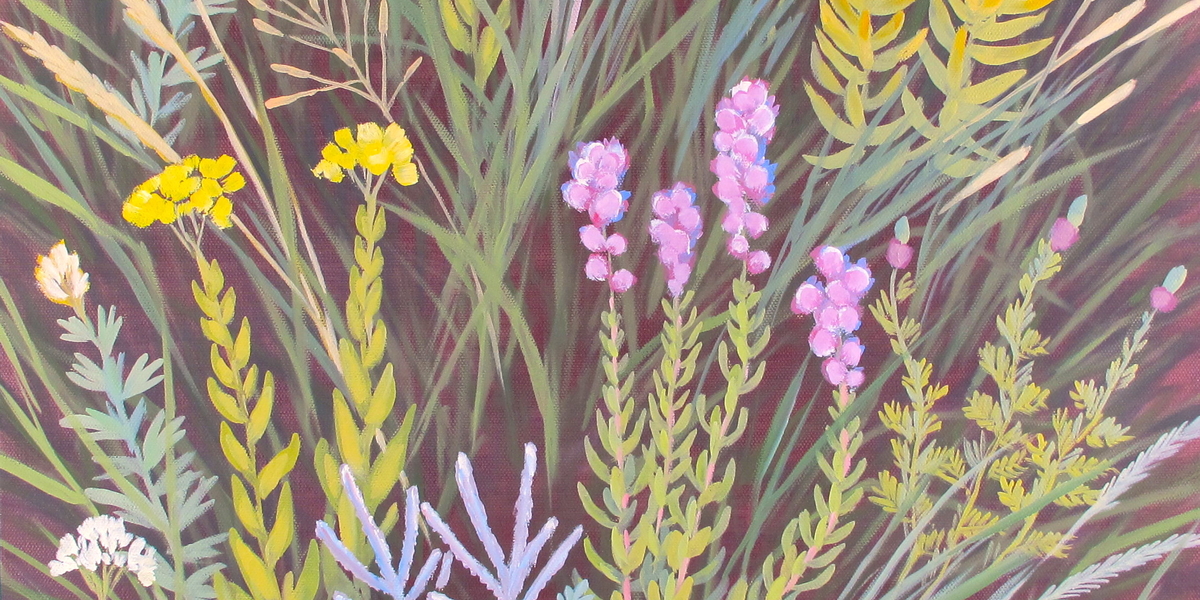
Life on Earth is amazingly diverse. For centuries, scientists have worked to catalog that diversity and understand how it came to be. They have also wondered how important diversity is for the functioning of living systems. In other words, what is biodiversity good for? The answer to this question is critical as human activities remove many species from large areas of the planet and drive many to extinction.
In the 1990s, a large-scale experiment at the Cedar Creek Ecosystem Science Reserve was initiated to try to answer this question. The Big Bio experimental field involves over 300 plots, each 9x9 meters (about 30x30 feet). Each plot was planted with a selection of native prairie plants. Some plots were planted with just one species, some with two, four, eight and sixteen species. Each spring, the plots are burned, and in the summer, they are weeded to remove any plants that were not the designated species. Each year, the plots are sampled to determine how much biomass is produced. Carbon and nitrogen in the soil are measured, and other things like insect abundance and diversity are studied.
The results have shown that more diverse plots produce more biomass, and this productivity has increased over time. More diverse plots are also more stable, producing more during droughts, and are more resistant to invasion by weedy species. The Big Bio experiment demonstrates that biodiversity is important for the productivity and stability of living systems.
These plots also vary dramatically in their appearance. Some plots are a tangle of vigorous growth while others are mostly bare ground. Some plots are in flower at only one point in the season, while others have some plants in blossom throughout the summer. Some plots have a very uniform look, while others are a rich and complex pattern of shapes, colors and textures. Over the 25 plus years that the experiment has been running, each plot seems to have developed its own history and personality. In this project, I have selected a series of nine plots, with different levels of diversity. I studied them from the perspective of an artist and a naturalist. I tried to capture, in a painting, the distinctive “portrait” of each plot, giving viewers an intimate perspective into each plot’s character, diversity and abundance. I also hope that my series of nine paintings will give viewers a window into the significance of the Big Bio experiment, one of the first studies to quantitatively demonstrate the importance of protecting our Earth’s amazing biological diversity.
My process
I visited the experimental plots several times throughout the growing season. Late June, early and late August, and early October.
I photographed many plots. I learned to identify the sixteen plant species by sketching them. I observed the weeding and harvesting process and looked for a selection of plots at different diversity levels that were visually interesting. I toured the plots with David Tilman and Caitlin Potter to learn about the experimental process. I photographed details of the plots during early morning hours when shadows made the plants more distinct.
In the painting process- I tried to mimic the establishment and growth of the plots. The plots all started as bare sandy soil and are burned each spring to remove most of the above ground litter. To mimic this, I painted a sandy base color on all the canvases. I then started each painting by adding the color, texture and shadows of the ground surface on top of the sand-colored base. After this was in place, I would add the colors, patterns and details of the plants.
As “portraits,” I wanted the paintings to be close-up views of the plots. I wanted viewers to see the plots as if they were looking down on them at a slight angle – as if they were trying to identify the plants and maybe weed out species that were not supposed to be there. Though my depictions of the plants would be simplified and stylized, I still wanted them to be identifiable. This became more of a challenge as I worked on the more diverse plots. How was I to show all the species in plots that were a thick and complex tangle of vegetation. In these plots, the ground surface was almost entirely in shadow during the morning. On these canvases, I painted a purplish glaze over the sand-colored base. On top of this I painted dark green leaves, mostly grass blades, as the shadow layer of vegetation. Then I painted each of the species found in that plot. I took some liberties by combining plants that would normally flower at different times during the season. Though I painted each “portrait” individually, my intention was always to show them as a group, displayed in a 3x3 grid, reflecting the grid of the Big Bio experiment.
This piece originally appeared in the Spring 2023 edition of Cedar Creek Ecosystem Science's Reserve Field Notes newsletter.